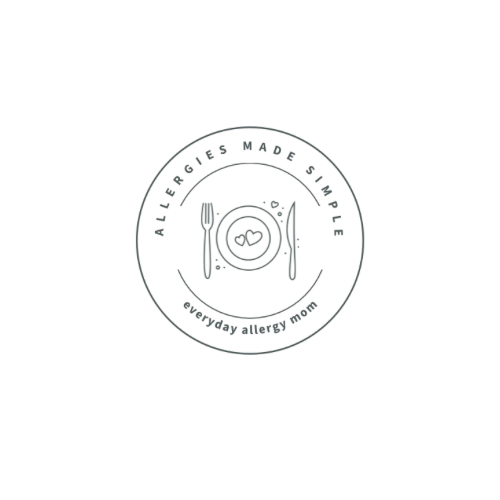How to Read Labels for Food Allergies (Without the Overwhelm)
If you’re new to the allergy world, reading food labels can feel like you need a PhD in nutrition science. Tiny fonts, unfamiliar words, warnings tucked away in different spots on the package—it’s a lot. I still remember those early grocery trips taking twice (realistically four times) as long, because I was standing in the aisle reading the same label over and over, just to be sure.
And here’s the thing: even when you’ve been doing it for years, you can’t go on autopilot. Companies change recipes, switch manufacturing plants, and update labels all the time. What was safe last week might not be safe this week. That’s why we check every single time.
For our family (dairy, egg, and peanut allergies), label reading has become second nature—but I won’t sugarcoat it, it’s something that requires diligence and focus.
📝 Quick Guide to Reading Labels
1. Look for the “Contains” Statement First
By law in the U.S., food manufacturers must clearly identify the Top 9 allergens (milk, eggs, peanuts, tree nuts, wheat, soy, fish, shellfish, sesame) either in parentheses within the ingredient list or in a bold “Contains” statement underneath.
👉 Example: Ingredients: Whey (milk), sugar, cocoa butter…
👉 Or: Contains: Milk, Soy.
This is a quick first stop, but don’t stop there.
2. Read the Entire Ingredient List
Even though allergens must be called out, it’s still important to familiarize yourself with ingredient names that may not be obvious at first glance.
For example:
Milk → casein, whey, ghee.
Egg → albumin, globulin, lecithin (if from egg).
Peanut → groundnuts, arachis oil.
These can pop up in processed foods, so it helps to train your eye over time.
FARE - how to read a food label
3. Check for “May Contain” or “Processed In a Facility” Warnings
These precautionary labels are voluntary (not legally required), but they do matter.
For some families, “may contain” is a hard no; for others, it’s a decision made with their doctor.
4. Check Every Time (Even for “Safe” Products)
This one can’t be said enough. Companies reformulate. Factories change.
If Everett wants a snack he’s had 100 times, I still check the label like it’s the first time.
5. When in Doubt, Contact the Manufacturer
Most companies have allergy hotlines or customer service teams.
A quick call or email can confirm cross-contamination risks and give peace of mind.
💡 Personal Tip: Make It Routine
For us, label reading is part of the rhythm: grab product, scan label, double-check if anything looks new. Over time, your eyes get quick at spotting red flags. But that initial overwhelm? Totally normal.
I’ll admit—when Everett was first diagnosed, I felt like I was hyper-reading every label, then rereading again. (Okay, maybe three times. 😅) It felt high-stakes, because it is. Over time, though, you find your groove and gain confidence. Not gonna lie—I’ve definitely fished packaging out of the trash more than once when I realized I might’ve skimmed too fast
✨ Final Thoughts
Label reading can feel overwhelming at first, but with time, it becomes second nature. The key is staying diligent—check every single time, even for foods you’ve bought before.
You’ve got this. And remember: you’re not alone. Every allergy parent has stood in the grocery aisle, squinting at tiny print and second-guessing themselves. It gets easier, and with practice, you’ll gain the confidence that your child is safe. 💙
Here’s to making allergy life a little simpler, one day at a time.
- Your Everyday Allergy Mom

